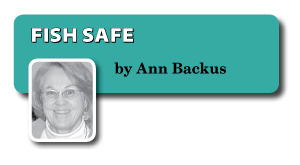The Coast Guard First District maintains a database of incidents to which it has responded. As of
Oct. 7, there were fewer commercial fishing casualties to date in 2014 than in any of the last five years – 176. That compares to the prior five years for this date when the totals have ranged from 182 in 2013 to 199 in 2009.
 Of the 176 incidents logged in the 2014 casualty database, 31, or 17.6%, resulted in voyage terminations. With 19 terminations, Sector Northern New England led the pack. Southern New England, Boston, and Long Island Sound followed with five, four, and three respectively.
Of the 176 incidents logged in the 2014 casualty database, 31, or 17.6%, resulted in voyage terminations. With 19 terminations, Sector Northern New England led the pack. Southern New England, Boston, and Long Island Sound followed with five, four, and three respectively.
According to the data, 68% of the voyage terminations were the result of vessels carrying an expired life raft or failing to have a required buoyant apparatus on board. Six of the 11 life raft violations in Northern New England were in the lobster fishery, which is not surprising given the size and activity of the lobster fishery in that area.
Fishermen’s reasons for failing to comply with these regulations may have to do with cost. It’s expensive to purchase life rafts and/or buoyant apparatus, and annual maintenance can run in the thousands of dollars. In contrast, PFD and immersion suit costs run in the hundreds of dollars and fire extinguisher costs are considerably less than that.
Nevertheless, these three safety equipment items don’t stand alone in terms of their contribution to safety but complement each other, and the lack or malfunction of any one of the three can have a major impact on the likelihood of surviving an accident.
From the casualty database, it is not possible to determine whether life rafts or immersion suits were used during the 16 groundings, 11 sinkings, and one capsize recorded, but there were no injuries or deaths associated with these incidents.
The four deaths that did occur during the first nine months of 2014 were not related to the deficits in safety equipment. Two were health-related, and two were the consequence of entanglement in lobster gear – both in Northern New England.
In terms of injuries, there were eight medevacs and 15 medical calls or “medicos.” Two of the medevacs were in response to fishing-related injuries to the hand or arm. The other six were general health-related incidents such as chest pain, severe illness, or seizures.
Eight of the 15 medico responses were for fishing-related injuries to the hand, head, arm, or back, dislocations, or, in one case, a severed thumb. Seven were general health-related problems such as asthma, chest pain, or seizures.
Of the 13 fires during this period, 10 were listed as extinguished, two were listed as assisted or escorted to port, and one was listed as a total loss. Clearly, functional fire extinguishers and quick response can reduce vessel losses from fire.
Casualties listed as “tow” may not have involved an actual tow. Nearly 10% of the 176 incidents (16) in the database were listed as “tows.” Of these, nine happened in Sector Northern New England. Ten of the 16 required dewatering assistance. Problems ranged from faulty valves to inoperable bilge pumps and hull breaches.
Exam decals
Vessels that pass the voluntary Coast Guard dockside exam receive a decal, which is issued once the exam reveals that all safety equipment, hoses, bilge areas, alarms, and more are in compliance with commercial fishing vessel safety regulations.
About 44% of the vessels in this casualty database had unexpired decals whereas about 20% had expired decals. Approximately 36% had no decals.
But a decal is only a snapshot in time of the condition of the vessel and its safety equipment. When the vessel and safety equipment are not maintained, there is a greater risk of loss. And even if a vessel is maintained and in compliance, accidents do happen. Fires, fuel contamination, and personal injury are all part of the mix.
So, where does that leave us? Fewer incidents to date may mean that fishermen are more aware than ever of the importance of fishing vessel safety. Or fishery management restrictions may be reducing the time fishermen can spend on the water.
Either way, we can’t be complacent. At this time of year, harsh fishing conditions are around the corner.
Check your life raft and have it serviced if due. Test your EPIRB and put in a new battery if due. Take 15 minutes to have everyone on your vessel get into their immersion suits, making sure that they still fit, the neoprene is intact, the zippers are waxed, and the lights are working. Then be sure to stow them on deck, not down below. n
Ann Backus, MS, is the director of outreach for the Harvard School of Public Health’s Department of Environmental Health in Boston, MA. She may be reached by phone at (617) 432-3327 or by e-mail at <abackus@hsph.harvard.edu>.






